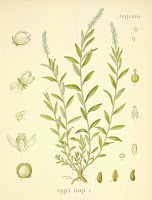According to my statistics service, this website had the following stats over the last 30 days:
I hadn't checked my stats in months, and was surprised (but very pleased) to see the increased traffic. My main goal in creating and working hard on this website, is to showcase and promote my hometown area's local history, that it will not be forgotten, and that it can be a gift to those that come after me.
I've had emails upon emails upon blog comment from current residents, former residents, expatriates, descendants of early settlers, and authors researching our local history, etc. who contact me about the content. Many have said that this website has provided one of the few - sometimes the only - resource for a subject matter they are researching. I do not claim that all of the content is original or even the majority. It is the nature of such a website that I feature others' work(s) and am happy to do so. Some of the work I quote from others are from private collections that are not online. There are many resources online now, but not all local history is there yet, and some probably never will be.
But some of the work here
is original also. Some of it is local history of a very personal nature but of broad appeal, not just personal/familial, but true local history, just that my family was intimately involved since we have deep roots in the area. Some of it is all original research and writing by me on a local history subject with no personal connection except that it happened in the region I grew up in.
I was recently in touch with the
Minnesota Historical Society and asked them if any funding through the
Legacy Grants could apply in preserving this website.
They worked hard with me to find a way, even huddling one afternoon and discussing my situation (bless them). They couldn't see a way for the existing guidelines to apply to my rather unique situation with a history blog.
There are many history blogs, but not a lot of this particular type with such a narrow focus. They gave me some alternative ideas I am now exploring, but most are long-shots. If anyone reading this has ideas on how this blog could be preserved, I'm all ears, and would love to hear from you! For me, it's all about the history, of making sure it's not hidden or forgotten, and is accessible for generations to come...










